Leadership Development Program Guide: Unlock Success in 2025
In 2025, organizations face a business environment defined by rapid change, digital disruption, and complex global challenges. The demand for adaptable, innovative, and resilient leaders has never been higher, as companies navigate new technologies, shifting markets, and evolving workforce expectations.
A well-designed leadership development program can be the catalyst that transforms potential into measurable business results. This guide will walk you through every step needed to create an effective leadership development program, from understanding emerging trends to aligning initiatives with your organization’s strategic priorities.
You will discover proven strategies for setting clear goals, assessing current capabilities, designing impactful learning experiences, and measuring true success.
The Evolving Landscape of Leadership Development in 2025
In 2025, organizations face a business landscape defined by digital transformation, shifting workforce expectations, and increased organizational complexity. Leaders are challenged to adapt to remote and hybrid work models while fostering innovation and resilience at every level.
Recent findings from the 2025 Global Leadership Development Study reveal that leaders must now navigate volatility, drive continuous learning, and champion organizational agility. Companies that invest in ongoing learning realize greater employee potential, while those that neglect it risk stagnation.
A generic approach to leadership development program design no longer suffices. Tailored experiences, aligned with core business priorities such as growth, innovation, and risk mitigation, are essential for engagement and measurable returns. Data from Harvard Business shows that firms prioritizing alignment see higher engagement and innovation metrics.
Consider Cinépolis, which reimagined its leadership development program to focus on innovation. This targeted approach resulted in measurable business gains and set a new standard for LDP impact. Today, organizations are expected to demonstrate clear outcomes from their LDPs, with executive leaders playing a key role in driving and sustaining these initiatives.
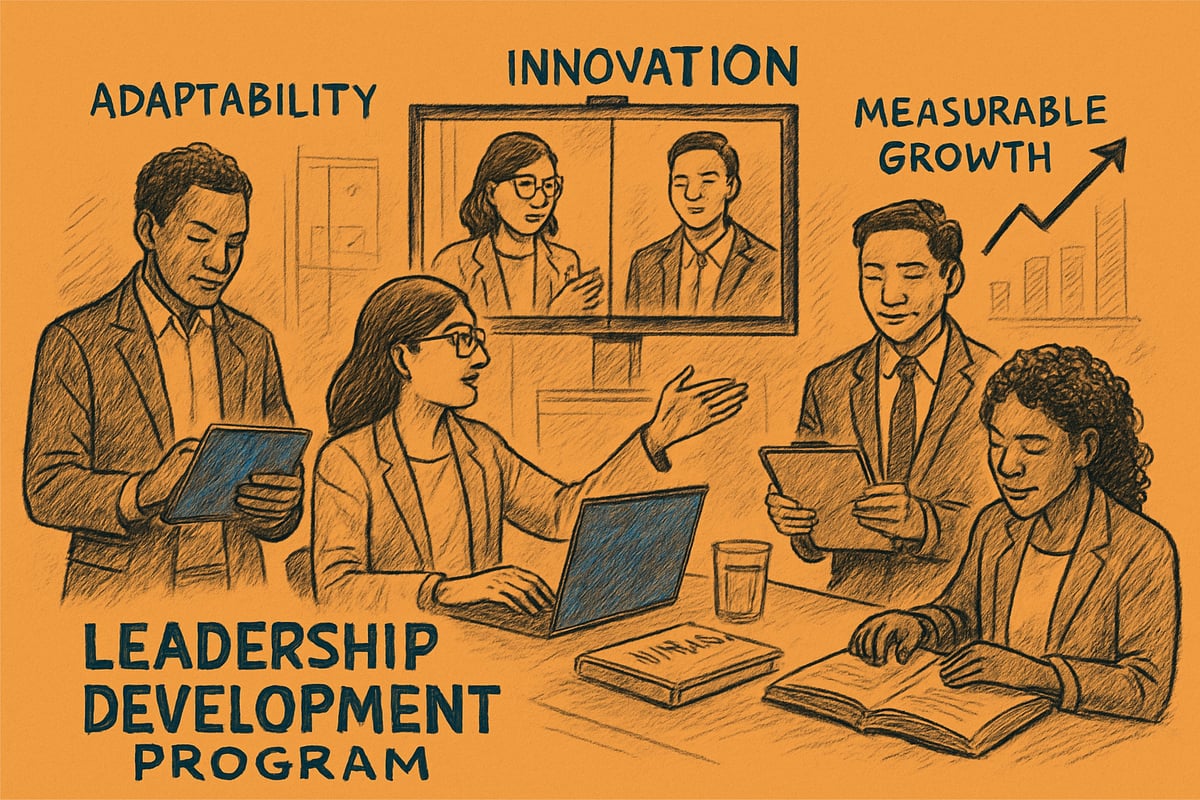
Step 1: Aligning Leadership Development with Business Priorities
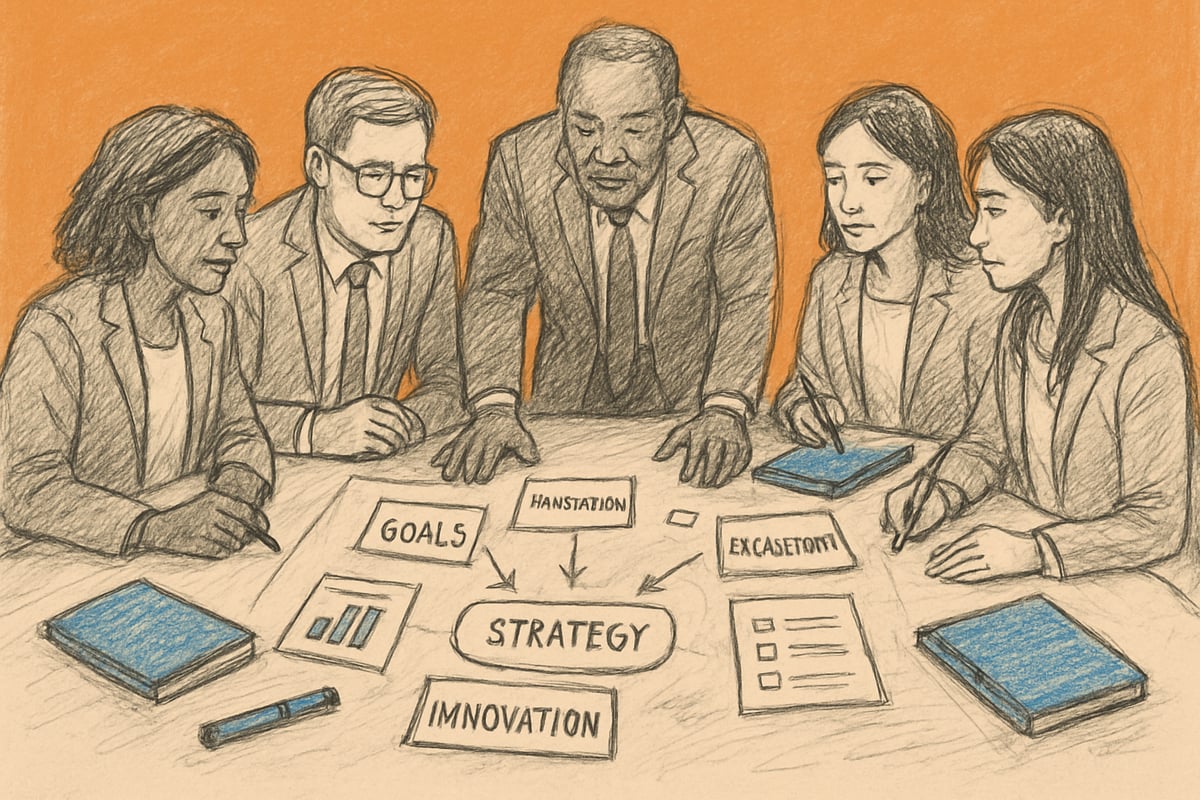
Why Alignment Is Foundational
Every successful leadership development program begins with a deep understanding of what the organization values most. Alignment connects your program to real business challenges, whether that means driving growth, managing risk, or improving culture. Without this focus, even the best-designed initiatives can fall short of expectations.
Identifying a clear business priority ensures your leadership development program delivers more than generic improvements. It becomes a strategic tool, driving targeted results that matter to your company’s future.
How to Achieve Alignment
To align your leadership development program with business priorities, bring together key stakeholders from across the organization. Collaborate to clarify which performance outcomes are most important, such as innovation or operational efficiency. Use alignment questions and checklists like those recommended by Harvard to keep your objectives clear and actionable.
Alignment Checklist Example:
| Alignment Question | Purpose |
|---|---|
| What is our top business challenge? | Focus program direction |
| Which leadership behaviors drive success? | Define development needs |
| How will we measure impact? | Set clear metrics |
Focusing on a few critical outcomes prevents your leadership development program from becoming diluted or losing impact. For the latest thinking on essential leadership behaviors, see the Top 5 Leadership Trends of 2025.
Real-World Example and Data
Cinépolis illustrates how aligning a leadership development program to innovation can transform results. By targeting a specific business priority, their focused training improved both engagement and measurable business outcomes.
Harvard’s research shows organizations with aligned leadership development programs consistently report higher innovation and engagement. Focused, tailored programs not only outperform broad initiatives but also deliver stronger returns and positive cultural shifts.
Step 2: Setting Clear, Measurable Leadership Development Goals
Setting clear, measurable goals is the backbone of any successful leadership development program. Without defined targets, organizations struggle to track progress or demonstrate tangible outcomes. In 2025, measurement is not just a best practice—it is a necessity for driving real business value.

Defining Success Indicators and Metrics
A robust leadership development program sets goals across three dimensions: learner experience, on-the-job performance, and overall business impact. Begin by deciding which qualitative indicators—like engagement or confidence—and quantitative metrics—such as retention or project completion rates—will define success.
For example, use pre- and post-program surveys to measure leadership confidence, or track decision-making improvements through performance data. The Global Leadership Forecast 2025 highlights that organizations with precise measurement see stronger leadership pipelines and business results.
Sample Goal Frameworks and Examples
A structured framework keeps your leadership development program focused. Here’s a typical goal-setting table:
| Business Priority | Performance Outcome | Indicator | Metric | Measurement Method |
|---|---|---|---|---|
| Increase Revenue | Cross-functional Projects | Collaboration Rate | # of New Initiatives | Project Tracking |
| Improve Retention | Employee Engagement | Survey Scores | % Change in Scores | Annual Engagement Survey |
Suppose your goal is to boost revenue through collaboration. You could track new cross-team projects and engagement levels before and after the program.
Best Practices for Goal-Setting
Make each goal specific to your organization’s needs and measurement systems.
Step 3: Assessing Current Leadership Capabilities and Gaps
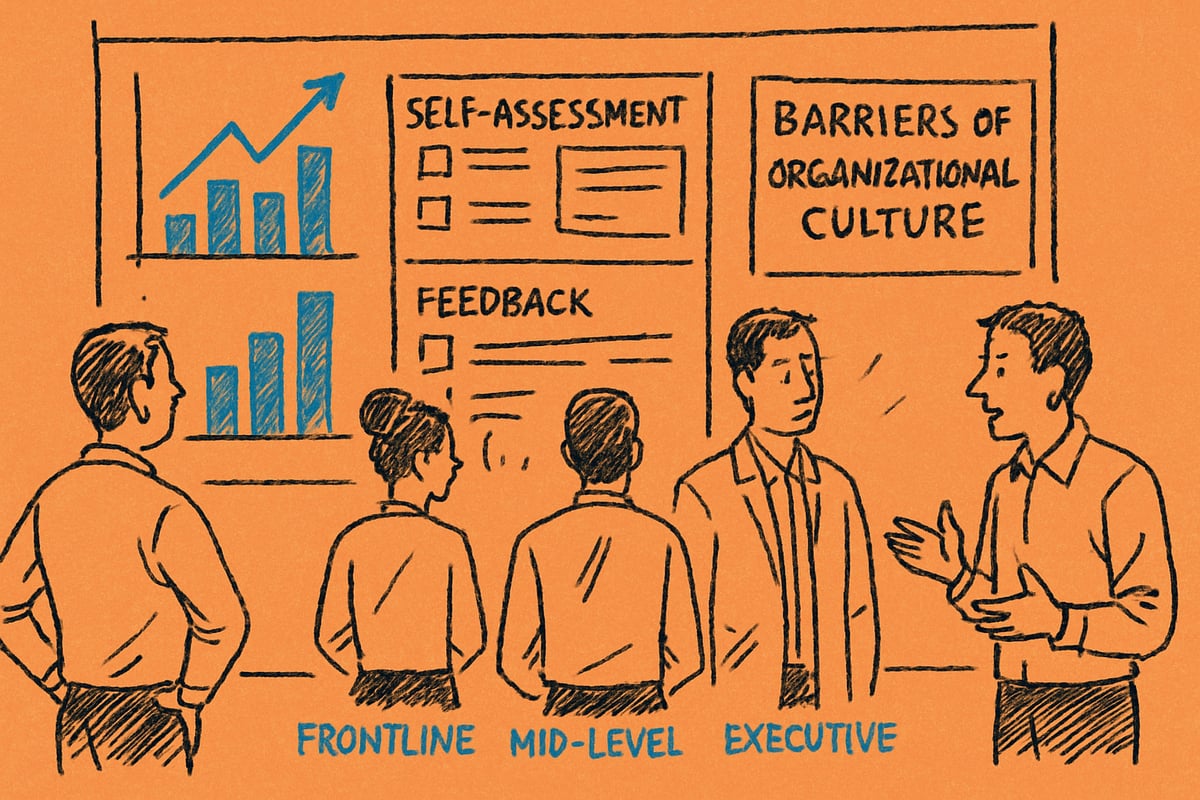
Organizational and Individual Assessment
A successful leadership development program begins by closely examining both organizational systems and individual leader capabilities. Assessing company culture, norms, and existing leadership behaviors provides a clear picture of readiness for transformation.
Honest self-assessment is essential. Leaders and teams must identify not only strengths but also potential obstacles to growth. According to Harvard research, 85 percent of employees acknowledge gaps in their own skills, highlighting the importance of targeted development.
Segmenting and Prioritizing Audiences
For maximum impact, segment leaders by level—senior, mid-level, and frontline—since each group has different needs. Tools like surveys, 360-degree assessments, and ongoing feedback help gather valuable data for each segment.
Prioritizing high-impact groups, such as mid-level managers, ensures the leadership development program drives meaningful results. Focusing resources on these leverage points accelerates organizational change and maximizes ROI.
Overcoming Cultural Barriers
Cultural resistance can stall even the best-designed leadership development program. Entrenched norms may make it difficult for new leadership behaviors to take root. Executive sponsorship is vital, as is celebrating early success stories to build momentum.
A foundation of psychological safety encourages leaders to adopt new behaviors and fosters open feedback. To learn more about building this environment, see the Stages of Psychological Safety resource. Lasting program success depends on aligning culture with leadership evolution.
Step 4: Designing and Delivering Effective Learning Experiences
Crafting a modern leadership development program requires more than traditional workshops. The right design ensures leaders not only learn but also apply new skills in the workplace. To achieve this, organizations must tailor experiences that resonate with every leadership tier.
Tailoring Content and Methods to Audience Needs
Effective learning starts with recognizing the unique needs of each leadership group. Frontline leaders benefit from peer connections and scenario-based practice. Mid-level managers thrive with micro-learning modules that fit their schedules. Executives require strategic, high-touch sessions that address complex business challenges.
Avoid overwhelming participants by focusing on curated, relevant content. Prioritize quality over quantity to ensure each topic supports the leadership development program’s goals. When content directly connects to daily challenges, engagement and retention rise.
Blending Learning Formats for Maximum Impact
A successful leadership development program blends multiple learning formats for deeper impact. In-person workshops foster networking and trust. Virtual sessions offer flexibility and scale. Self-guided modules allow leaders to learn at their own pace. For example, Capital Group uses a mix of curated content, facilitated discussions, and executive sponsorship.
Blended approaches align with Leadership Training Trends 2025, which emphasize adaptive learning and organizational resilience. Combining formats gives leaders more ways to practice and apply new skills.
Ensuring Engagement and Application
To maximize a leadership development program’s impact, experiential learning is essential. Real-world challenges, simulations, and action learning drive behavior change. Ongoing coaching, peer learning, and structured feedback loops reinforce new habits.
Integrate follow-up support so leaders continue to develop after formal sessions. Application in daily work should be the ultimate measure of program success. This approach leads to stronger business results and sustained leadership growth.
Quality Control and Content Vetting
Not all learning resources are created equal. Low-quality or generic content can dilute the effectiveness of any leadership development program. Relying on unverified or AI-generated materials risks misalignment with business goals.
Vet all materials for credibility, relevance, and alignment with desired competencies. Build a checklist to evaluate resources before including them in your program. This ensures every element contributes to meaningful leadership growth and measurable outcomes.
Step 5: Measuring Impact and Sustaining Leadership Growth
Measuring the effectiveness of a leadership development program requires a disciplined approach. Start by tracking progress at every stage, using both quantitative data like engagement scores and qualitative insights from participant feedback. Define clear metrics upfront, such as communication improvements or teamwork, and use post-program tools like Reflections® 360 to capture leadership growth.
To reinforce new behaviors, executive sponsorship is essential. Leaders must recognize and reward progress to embed learning into daily practice. Sharing success stories and early wins keeps momentum high and encourages organization-wide buy-in for the leadership development program.
| Metric Type | Example Metrics | How to Measure |
|---|---|---|
| Quantitative | Engagement, retention, project launches | Surveys, HR data, performance dashboards |
| Qualitative | Feedback, observed behaviors | Interviews, 360 reviews |
Sustaining gains demands ongoing support. Use follow-up coaching, alumni communities, and leadership toolkits to ensure continued progress. Accessing expert coaches through the Business Coaches Directory can provide critical guidance for leaders at every stage.
Common Pitfalls and How to Avoid Them
Even the best leadership development program can fail if common pitfalls are not avoided. Many organizations struggle with:
- Lack of alignment with business priorities
- Vague or shifting goals
- Inadequate assessment of current and future needs
- One-size-fits-all approaches
- Overwhelming learners with too much or irrelevant content
- Neglecting cultural readiness and executive sponsorship
- Poor measurement of progress
To overcome these challenges, focus first on aligning your program with strategic goals. Set clear, measurable objectives and segment audiences for targeted learning. Regularly vet content for quality and relevance, drawing insights from Leadership in Manufacturing Trends to stay current.
Avoiding these mistakes requires ongoing executive support and a commitment to continuous improvement. Customization and focus are key, as showcased by organizations that adapt their programs for real business impact. For further insights on accountability and sustained growth, visit Accountability Now.
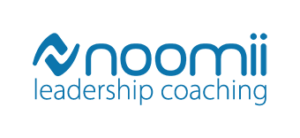
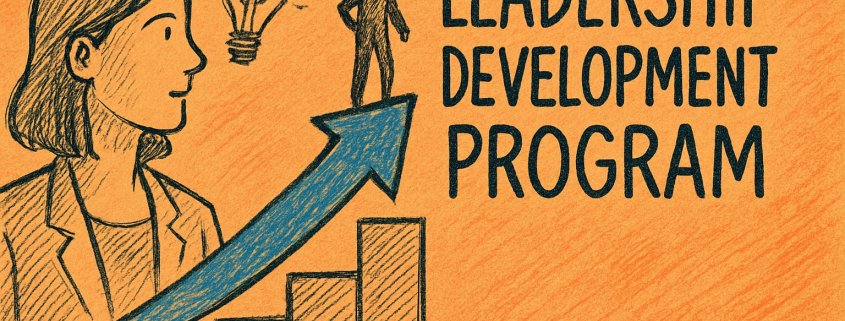


Leave a Reply
Want to join the discussion?Feel free to contribute!